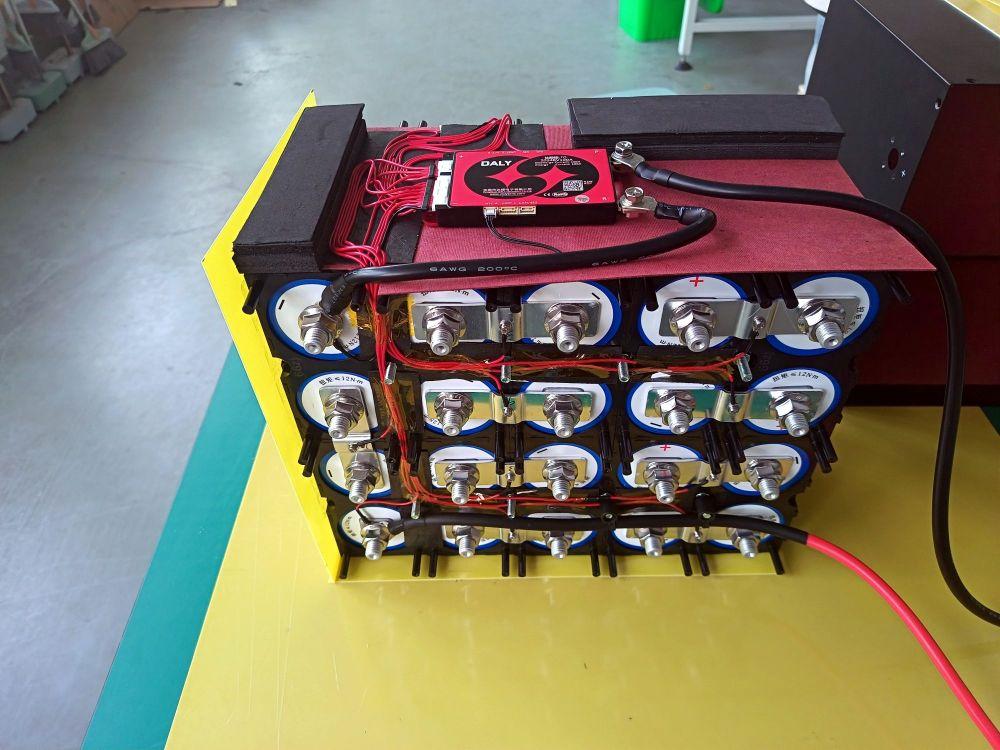
Modern lithium batteries—whether powering forklifts, solar setups, RVs, e-bikes, or high-performance vehicles—deliver remarkable power in a compact form. But behind that convenience lies an indispensable piece of technology: the Battery Management System (BMS).
A BMS isn’t just an add-on. It’s the core safety and performance component that safeguards your lithium cells, ensures a long service life, and keeps your equipment running reliably. As lithium batteries increasingly replace traditional lead-acid systems across various industries, understanding the essential role of a BMS helps buyers make smarter and safer purchasing decisions.
A Battery Management System is an electronic control unit connected to every cell inside a lithium battery pack. Its role is straightforward yet vital:
to monitor, protect, balance, and optimize the battery.
Since a single LiFePO4 cell provides around 3.2V, multiple cells must be combined to create 12V, 24V, or 48V battery systems. Without a BMS, these cells could drift out of balance, become overcharged or over-discharged, and fail prematurely—or even hazardously.
1. Safe and Accurate Charging Protection
Lithium batteries are highly sensitive to charging voltage. Overcharging—even slightly—can permanently damage cells and shorten their lifespan.
Recommended Charge Limits
- LiFePO4 (Lithium Iron Phosphate)
– Nominal voltage: 3.2V
– Maximum charge voltage: 3.65V per cell
- LiNCM / LiMn₂O₄ (Lithium Polymer)
– Nominal voltage: 3.7V
– Maximum charge voltage: 4.2V per cell
A high-quality BMS automatically cuts off charging when the maximum voltage is reached. This prevents thermal damage, capacity loss, and safety risks—especially in larger battery banks.
2. Preventing Over-Discharge During Use
Just as overcharging is harmful, deep discharging is equally dangerous for lithium batteries.
Safe Discharge Limits
- LiFePO4: never below 2.4V per cell
- Li-Polymer: never below 2.8V per cell
If a battery drops below these thresholds, the internal chemistry degrades, leading to:
- Permanent capacity loss
- Poor cycle life
- Premature failure
A BMS monitors each cell and stops discharge if any cell approaches the minimum voltage. Without this, one weak cell can compromise the entire pack—an expensive mistake, especially for industrial users.
3. Cell Balancing: Maximizing Capacity and Lifespan
Not all battery cells age the same way. Some charge faster, some store more energy, and some weaken sooner.
Think of it like a wooden barrel made of staves: if some staves are shorter, the barrel can’t be filled to its full capacity. Similarly, one weak cell limits the whole battery.
Balancing Methods
- Passive Balancing: Uses resistors to burn off excess energy from stronger cells, allowing weaker ones to catch up.
- Active Balancing (found in higher-end BMS units): Transfers energy between cells to maximize usable capacity.
Low-cost BMS solutions often halt charging as soon as the first cell hits 3.65V. That can waste up to 20% of usable capacity—a significant loss for EVs, solar storage, or heavy-duty equipment where runtime matters.
4. Protecting Against Uneven Discharge
During discharge, unbalanced cells pose serious risks. A weak cell may hit the cutoff voltage well before the others.
A well-designed BMS:
- Keeps all cells balanced throughout the discharge cycle
- Ensures the weakest cell never drops below its safe minimum voltage
- Protects the entire pack from instability
For LiFePO4 batteries, this means keeping every cell above 2.4V; for lithium polymer batteries, above 2.8V.
Balanced discharge means:
- Longer lifespan
- Better performance
- Fewer service interruptions
5. Temperature Monitoring and Thermal Protection
Temperature is a major factor in lithium battery safety.
Some lithium chemistries—especially lithium cobalt—can enter thermal runaway if improperly charged. LiFePO4 is significantly safer and more stable, but extreme heat still causes degradation.
A robust BMS continuously monitors internal pack temperature and will:
- Limit charging current
- Reduce discharge current
- Disconnect the pack entirely if overheating occurs
This protects your investment and helps prevent hazardous situations, particularly in high-power uses like EVs, forklifts, or power tools.
A Battery Management System is not optional—it’s essential for the safe, efficient, and long-lasting operation of lithium batteries. From charging and discharging protection to cell balancing and temperature control, the BMS ensures your battery pack performs reliably and safely throughout its entire lifespan.
1. Can a lithium battery run without a BMS?
Technically, yes—but it’s risky. Without a BMS, cells can become overcharged, over-discharged, or unbalanced, leading to rapid degradation or dangerous failures. A battery without a BMS might work briefly, but it won’t last long or operate safely.
2. Does every lithium battery need the same type of BMS?
No. Different lithium chemistries have different voltage limits and safety requirements. For example, LiFePO4 needs lower charge and discharge cutoffs than Li-ion polymer. That’s why it’s important to choose a BMS designed for your specific battery type.
3. What happens if the BMS shuts off my battery?
This usually means the system detected an unsafe condition—such as low voltage, high voltage, high temperature, or overcurrent. Once the issue is resolved (e.g., by charging, cooling, or reducing load), the battery typically resets and becomes usable again.
4. How long does a BMS last?
A good-quality BMS can last as long as the battery itself—often 8 to 15 years for LiFePO4 systems. Lifespan depends on build quality, operating temperature, and usage conditions.
5. Is an external BMS better than a built-in BMS?
Both have their place. Built-in BMS units are convenient and ideal for plug-and-play batteries. External BMS solutions offer more advanced controls, higher current handling, and custom programming, making them popular for large battery banks, solar systems, and EV conversions.
Next:None
Previous:EVE Energy and Hello Tech Partner on Solid-State Batteries